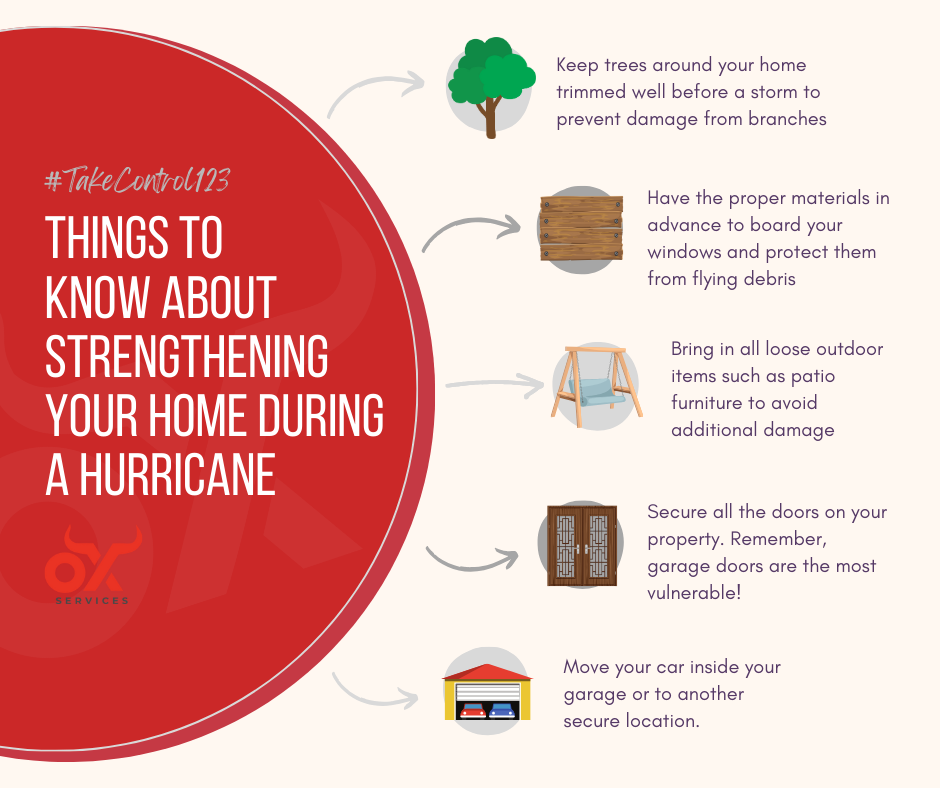Safety, Emergency Preparedness
& Resource Center
Get quick tips on how to stay safe during emergencies, disasters, as well as general guidelines for a safe home and work environment.
Featured Safety Topic:
Hurricane Safety Tips and Resources
By knowing what actions to take before the hurricane season begins, when a hurricane approaches, and when the storm is in your area, as well as what to do after a hurricane leaves your area, you can increase your chance of survival. Read stories from survivors and learn how to stay safe.

Stay Prepared!
Hurricanes are among nature's most powerful and destructive phenomena. On average, 12 tropical storms, 6 of which become hurricanes form over the Atlantic Ocean, Caribbean Sea, or Gulf of Mexico during the hurricane season which runs from June 1 to November 30 each year. In the Central Pacific Ocean, an average of 3 tropical storms, 2 of which become hurricanes form or move over the area during the hurricane season, which runs from June 1 to November 30 each year.
Understanding Weather Alerts
Do you know the difference between a National Weather Service Severe Thunderstorm Watch and a Severe Thunderstorm Warning? Check your knowledge below.

Severe Thunderstorm Watch
Be Prepared!
Severe thunderstorms are possible in and near the watch area. Stay informed and be ready to act if a severe thunderstorm warning is issued. The watch area is typically large, covering numerous counties or even states.
Severe Thunderstorm Warning
Take Action!
Severe weather has been reported by spotters or indicated by radar. Warnings indicate imminent danger to life and property. Take shelter in a substantial building. Get out of mobile homes that can blow over in high winds. Warnings typically encompass a much smaller area (around the size of a city or small county) that may be impacted by a large hail or damaging wind identified by an NWS forecaster on radar or by a trained spotter/law enforcement who is watching the storm
Hurricane Hazards
While hurricanes pose the greatest threat to life and property, tropical storms and depression also can be devastating. The primary hazards from tropical cyclones (which include tropical depressions, tropical storms, and hurricanes) are storm surge flooding, inland flooding from heavy rains, destructive winds, tornadoes, and high surf and rip currents.
- Storm surge is the abnormal rise of water generated by a storm's winds. This hazard is historically the leading cause of hurricane related deaths in the United States. Storm surge and large battering waves can result in large loss of life and cause massive destruction along the coast.
- Storm surge can travel several miles inland, especially along bays, rivers, and estuaries.
- Flooding from heavy rains is the second leading cause of fatalities from landfalling tropical cyclones. Widespread torrential rains associated with these storms often cause flooding hundreds of miles inland. This flooding can persist for several days after a storm has dissipated.
- Winds from a hurricane can destroy buildings and manufactured homes. Signs, roofing material, and other items left outside can become flying missiles during hurricanes.
- Tornadoes can accompany landfalling tropical cyclones. These tornadoes typically occur in rain bands well away from the center of the storm.
- Dangerous waves produced by a tropical cyclone's strong winds can pose a significant hazard to coastal residents and mariners. These waves can cause deadly rip currents, significant beach erosion, and damage to structures along the coastline, even when the storm is more than a 1,000 miles offshore
Safety is Our #1 Concern & the Key to Success
September 2023
National Preparedness Month
National Preparedness Month is an observance each September to raise awareness about the importance of preparing for disasters and emergencies that could happen at any time. This one-of-a-kind campaign is committed to putting people first and reaching communities where they are. This year’s national public service announcements are being developed and will be released throughout the country this September, to help get preparedness information into the hands of those who live in underserved communities.

2023: Take Control in 1, 2, 3!
Older adults and their caregivers can overcome these potential obstacles and increase their resilience by taking control in 1, 2, 3.

Step 1: Assess Your Needs
Assess your needs. If you have medications that need refrigeration, rely on mobility or assistive devices or have a pet you’ll need to understand how these variables will factor into what you’ll need to stay safe in a disaster or emergency.

Step 2: Make a Plan
Make a plan. Once you assess your needs, you can tailor your plans to make sure your needs are met. This can include building a kit that includes extra medication, having a way to store medications in an emergency and planning for your pets or service animals. If you’re an older adult or work with and support older adult communities visit Ready.gov/older-adults and Ready.gov/es/adultos-mayores for resources.

Step 3: Engage Your Network
Reaching out to family, friends and neighbors can help you build a support network that can support you before, during and after a disaster or emergency. Share each aspect of your emergency plan with everyone in your group, including a friend or relative in another area who would not be impacted by the same emergency who can help if necessary. Practice your plan with those who have agreed to be part of your personal support network.

